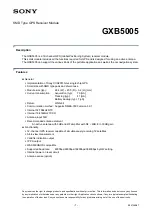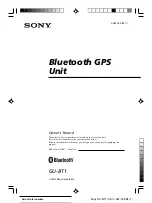
11
Introduction
2 Introduction
2.1 What is GPS?
The Global Positioning System (GPS) is one of two satellite navigation systems
covering the whole earth. It was developed in 1978 by the US Department of
Defence to replace TRANSIT, the first US satellite navigation system, and was
initially designed to develop the defence ability of the USA.
The second system currently being used is the GLObal NAvigation Satellite
System (GLONASS), operated by Russia. The system was completed in 1995.
Technical Principles
GPS navigation is based on the principle of determining the distance between a
certain location on the earth to the NAVSTAR satellites revolving around the
earth on six different orbits twice a day. Their orientation in relation to the
equator is approx. 55 °.
Figure 2-1:
The NAVSTAR
satellites on their orbits
The satellites are continuously sending encoded position and time information
in a frequency range of approx. 1500 MHz.
Special GPS receivers (passive receivers) receive these signals and determine
their exact position in the system of earth co-ordinates by means of the signal
code as well as measurement of the time span between receiving the signals.
At the same time, the GPS receiver’s clock is synchronized to the atomic clocks
aboard the GPS satellites.
Содержание CMGPS
Страница 1: ...27 CMGPS Synchronization Unit Reference Manual...
Страница 8: ...GPS Synchronization Unit CMGPS 8...
Страница 10: ...GPS Synchronization Unit CMGPS 10...
Страница 24: ...GPS Synchronization Unit CMGPS 24...
Страница 28: ...GPS Synchronization Unit CMGPS 28...
Страница 34: ...GPS Syncronization Unit CMGPS 34...
Страница 46: ...Contact Information Technical Support 46...












































